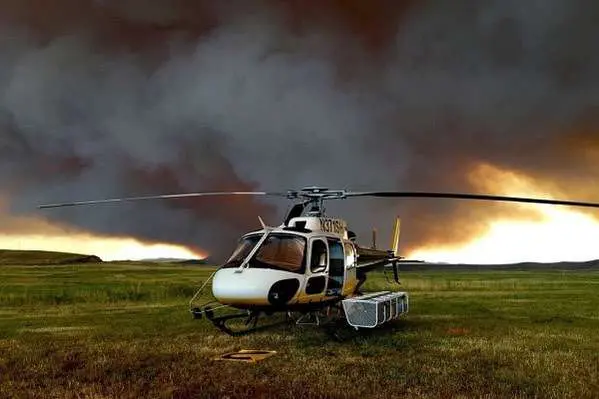
More than 120 wildfires are burning across 1.6 million acres in the United States. Firefighters aren’t just struggling to battle these blazes, they’re also facing the dangers posed by unauthorized drone flights over or near the fires. Firefighters across the nation have repeatedly been forced to cease helicopter and airplane operations because the presence of drones prevented them from flying safely. In these circumstances, the minutes or hours of flight delay could mean lost lives and destroyed property.
Federal, state and local fire management agencies and the Federal Aviation Administration (FAA) urge members of the public not to fly drones over or near wildfires. Unauthorized drone flights pose collision hazards to firefighting aircraft and can distract pilots who are operating in stressful and challenging conditions. A collision could cause serious injury or death to fire crews in the air, endanger firefighters and members of the public on the ground, and drastically limit the effectiveness of fire suppression efforts.
People who engage in this dangerous and irresponsible activity are violating federal, state, and/or local laws and regulations, regardless of whether a Temporary Flight Restriction (TFR) is in place.
Fire agencies are reporting to the FAA and to law enforcement unauthorized drone flights near wildfires on federal, tribal, state and local lands. People who interfere with fire suppression efforts will face civil penalties that could exceed $20,000, as well as potential criminal prosecution.
Anyone who witnesses or has information about an unauthorized drone flight over or near a wildfire should immediately contact local law enforcement.
To keep drone pilots aware of flight restrictions, the FAA developed an easy-to-use smartphone app called B4UFLY. The app helps drone pilots determine whether restrictions or requirements are in effect at the location where they want to fly. B4UFLY is available for free download in the App Store for iOS and Google Play store for Android. But regardless of whether a TFR is in place, people should never fly drones near or over wildfires.
From NIFC:
Drones are fun, but potentially deadly in the wrong place
Unmanned Aircraft Systems (UAS), generally called drones, are gaining in popularity. Although drones are fun to fly, they can be deadly if flown near wildfires. Drones can interfere with wildland fire air traffic, such as air tankers, helicopters, and other firefighting aircraft that are necessary to suppress wildland fires. Aerial firefighting missions including aerial supervision, air tanker retardant drops, helicopter water drops, and smokejumper paracargo occur between ground level and 200 feet above ground level, which is the same altitude that many hobbyist drones fly.
Hobbyist drones and firefighting aircraft don’t mix. All authorized aircraft on an incident maintain radio communication with each other to safely coordinate their missions, but aerial firefighting flight crews have no way to communicate with drone operators. Aerial firefighting aircraft have no way to detect drones other than by seeing them, and visual detection is nearly impossible due to the small size of most drones. These factors make a mid-air collision with an unauthorized drone a distinct possibility.
If You Fly, Someone Could Die
Even a tiny drone can cause a serious or fatal accident if it collides with firefighting aircraft. In most situations, if drones are spotted near a wildfire, firefighting aircraft must land due to safety concerns. This prolongs firefighting operations; in many cases, wildfires become larger when aircraft are not able to drop fire retardant, water, monitor wildfires from above, or provide tactical information to firefighters. Homes and other values at risk could burn needlessly, firefighters or others could be injured, or worst of all, a fatal accident could occur.
Flying a Drone Near a Wildfire is Breaking the Law
Per the U.S. Code of Federal Regulations, 43 CFR 9212.1(f), it is illegal to resist or interfere with the efforts of firefighter(s) to extinguish a fire. Doing so can result in a significant fine and/or a mandatory court appearance. So, be smart and just don’t fly your drone anywhere near a wildfire. No amount of video or photos are worth the consequences.
Please, don’t fly your drone near a wildfire!







